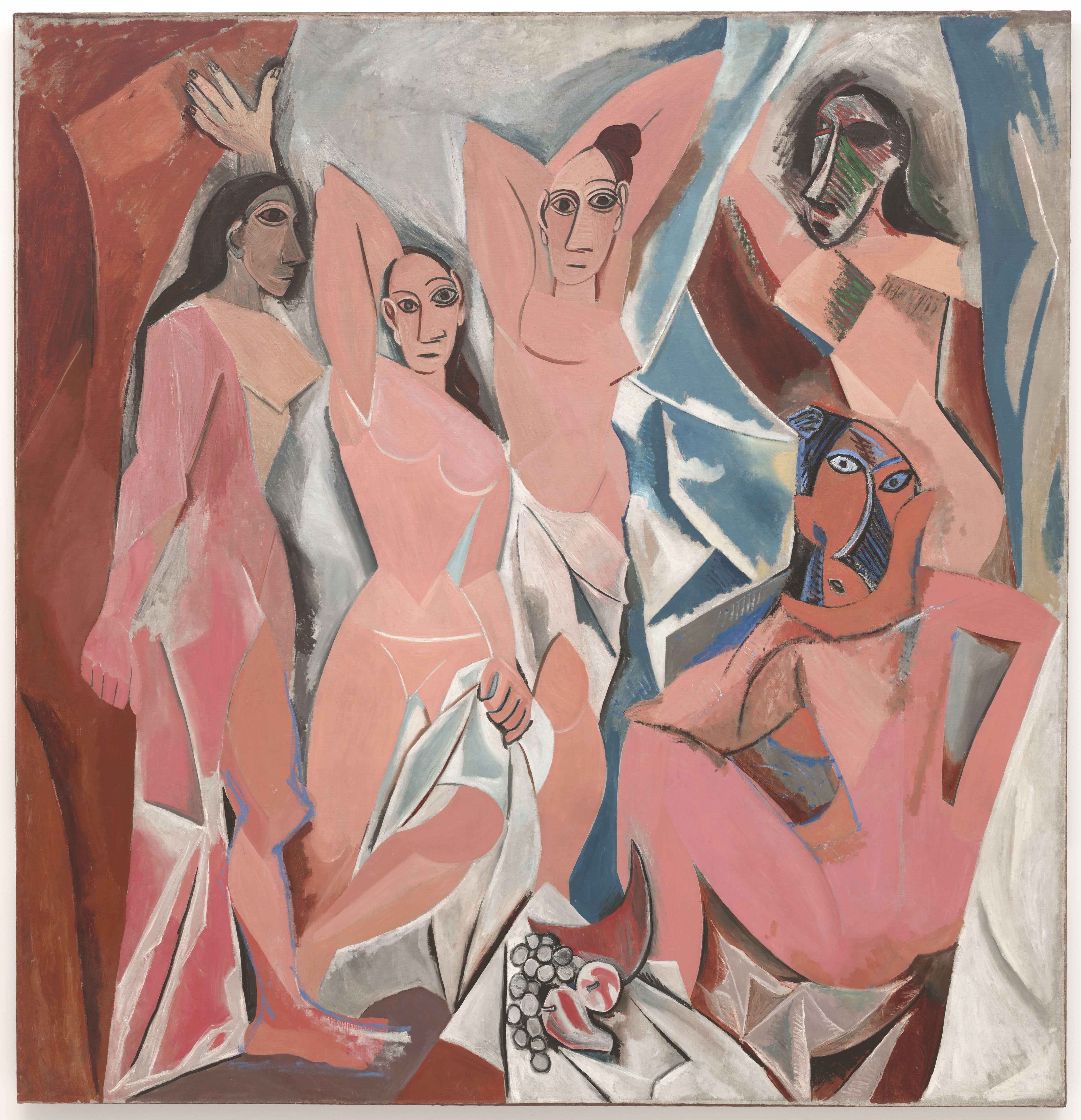The Provocative Evolution of Picasso's Masterpiece
Pablo Picasso's "Les Demoiselles d'Avignon" stands as a groundbreaking icon of modern art, revered for its revolutionary style and enigmatic portrayal of the female form. Yet, amidst its acclaim, lies a fascinating journey of creation, controversy, and evolution, beginning with its original title, "Le Bordel d'Avignon" ("The Brothel of Avignon").
Les Demoiselles d'Avignon. Source: Wikipedia.org
In the bustling streets of Barcelona in 1906, Picasso embarked on a daring exploration of the human psyche and societal taboos. Inspired by the raw energy of Avignon Street's brothels, he commenced work on what would later become one of his most celebrated works. The initial sketches depicted prostitutes in a brothel setting, capturing the gritty reality of their existence.
However, as Picasso delved deeper into his artistic endeavor, his vision transcended the confines of literal representation. The figures began to distort, their forms contorting into angular shapes and fractured planes. Faces became masks, conveying a primal essence rather than individual identities. In this transformative process, the painting shed its original narrative, evolving into a bold experiment in abstraction.
Central to the painting's evolution was Picasso's encounter with African and Iberian art. At the time, Europe was experiencing a fascination with so-called "primitive" cultures, and Picasso was no exception. He avidly collected African masks and sculptures, drawn to their expressive power and elemental forms. These influences seeped into "Les Demoiselles d'Avignon," infusing it with a raw, primal energy that shattered traditional artistic conventions.
The painting's title underwent a transformation as well, reflecting its shift in focus. "Le Bordel d'Avignon" was deemed too explicit for public consumption, prompting Picasso to rebrand it as "Les Demoiselles d'Avignon." This new title, with its genteel connotations, belied the painting's provocative nature, allowing viewers to approach it with a sense of intrigue rather than scandal.
Upon its completion in 1907, "Les Demoiselles d'Avignon" was met with shock and bewilderment. Its disjointed forms and confrontational gaze defied the aesthetic sensibilities of the time, challenging viewers to confront their preconceptions of beauty and decency. Critics recoiled at its perceived ugliness, dismissing it as a grotesque aberration.
Yet, despite initial resistance, the painting would go on to redefine the course of modern art. Its influence reverberated through the works of subsequent generations of artists, inspiring movements such as Cubism and Surrealism. Picasso's bold experimentation paved the way for artistic freedom and innovation, forever altering the trajectory of art history.
 Path Through The yellow flowers. Clare Wrench
Path Through The yellow flowers. Clare Wrench
